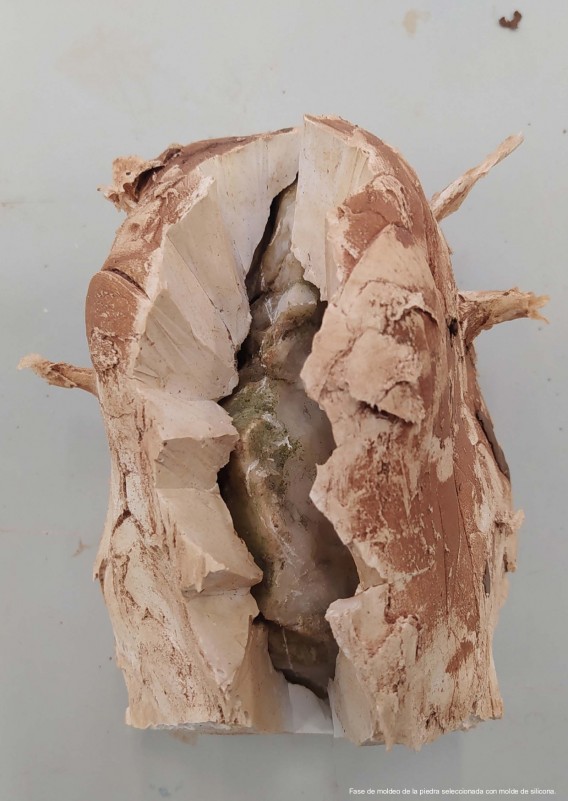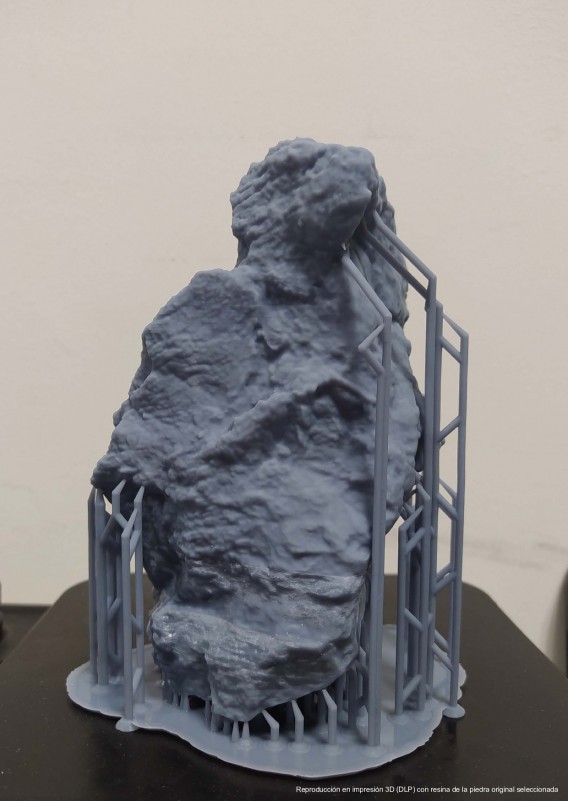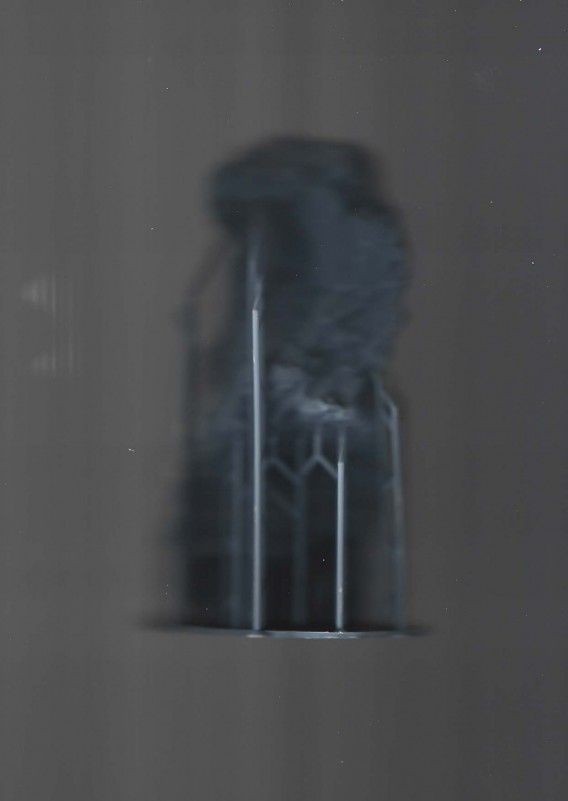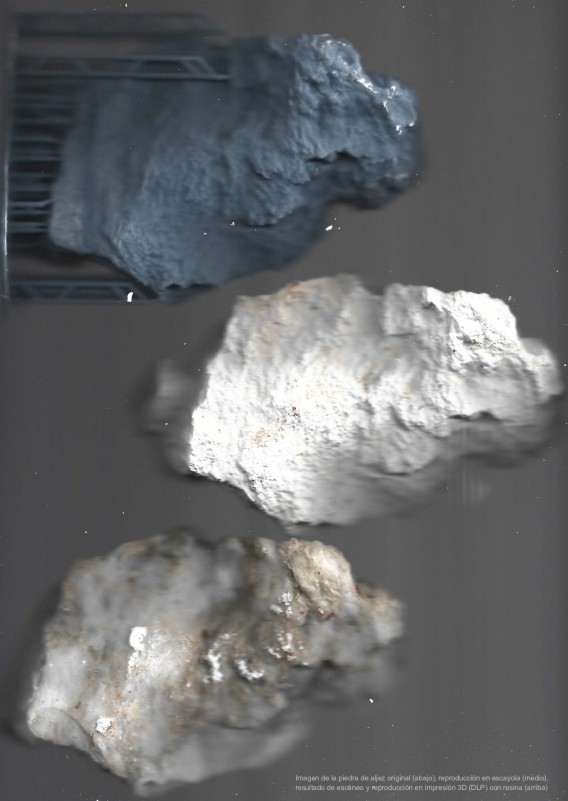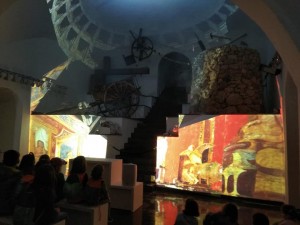CaSO4.2H2O is the chemical formula of calcium sulfate dihydrate, a mineral whose common name is gypsum. With this name, and having as its object that material that has so many historical resonances in the field of plastic arts, Raúl León presented a project to the Call for the development of an artistic project: “Art and Geology”, convened by La Posta Foundation, of which it has been selected as the best project.
This is a project that is a transdisciplinary work on the significance of this mineral as a fundamental heritage element in social, artistic-cultural and technological development.
The transformation processes of aljez or gypsum stone (CaSO4.2H2O) into materials usable by humans began in the Neolithic period (6000-3000 BC). The aljez is a part of the geological landscape of the territory that has been transformed over centuries into buildings, sculptures, agricultural fertilizers and food coagulants. However, the wisdom transmitted by these transformation processes has been interrupted during the 20th century by the industrialization and mass production of these materials.
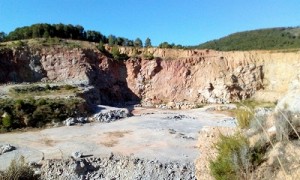
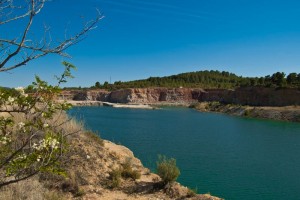
Old gypsum extraction quarries in Soneja and Sot de Ferrer, some active and others completed and restored, like the one below, where an artificial wetland has been created that is helping to recover native species.
The activity of the quarry caused the remains of the railway line that ran through this area from the Ojos Negros mine (Teruel) to the port of Sagunto to disappear. In this place it is possible to perfectly appreciate the cuts made by the machinery during the extraction work, as well as the truck paths to remove the raw materials.
The importance of this process of transformation of aljez (CaSO4.2H2O) into gypsum (CaSO4.1/2H2O) is being claimed from multiple academic and social disciplines (architecture, sociology, anthropology and geology). This vernacular and situated wisdom, although it is a process of extraction and transformation of materials, is the reflection of social metabolic processes that, due to their scale and impact, are extremely respectful of the natural environment.
“the building is built with materials linked to the landscape, its geology, its crops, or its climate and on the other hand the building is integrated into the landscape because it is built with materials extracted from it”
Vincenzina La Spina: “Study of Plaster Traditional in Spain: Sites, quarries, ovens and traditional architecture, their state of conservation and proposals for visitable itineraries for their revaluation and dissemination”, Polytechnic University of Cartagena, 2016, page. 7
CaSO4.2H2O aims to participate in the symbolic and effective recovery of the transformation processes of this mineral into materials derived in a direct, artisanal and respectful way with the natural environment.
ACTIVITY PROGRAM
The project is developed in three actions that communicate and complement each other:
- Action 01. Panel of experts and interest group.
During the approximately two months of implementation of the project, there will be a meeting with experts in traditional plaster production and its various applications. The objective of this meeting is to rescue from oblivion construction techniques and transformation processes that are a sign of identity of local constructions, especially in the Spanish Mediterranean basin, while attempting to project the potential of these wisdoms in danger of disappearing in the context current climate crisis.
Therefore, Fundación La Posta will be transformed during these months into a temporary center for documentation, transdisciplinary debate and sharing on the processes of transformation of the geological landscape and the traditional use of gypsum.
Coordinating this part of the project we have the expert in the study of traditional plaster in Spain, Vincenzina la Spina (University Professor, Department of Architecture and Building Technology of the Polytechnic University of Cartagena).
- Action 02. Plaster Museum and Soneja City council.
In the Valencian Community there are many places where we find vestiges of the transformation of this part of the geological landscape into raw material. Among these places, the town of Soneja stands out, which has the only museum dedicated to plaster in Spain.
Since the topic discussed has a strong connection with the territory, the situated and specific geological landscape, we intend to produce and carry out a “Plaster Route” in coordination with those responsible for the Soneja Plaster Museum and other relevant local agents (historians, chroniclers and researchers). On the other hand, starting from local collaborators, we proposed a “Recovery Day” of the extraction, cooking and grinding procedures of natural plaster.
- Action 03. Cyclic sculpture for the exhibition at Fundación La Posta in the month of February 2024.
Starting from four rocks extracted in the historical quarries of the towns of Andilla, Gestalgar, Picassent and Soneja, a cyclical sculptural work is proposed.
This process consists of making a mold of the original aljez stone (CaSO4.2H2O), cooking and grinding the stone to obtain gypsum (CaSO4.1/2H2O) and casting the mold with the mineral material itself obtained from the original stone. This process will be repeated on each stone until its complete disappearance.
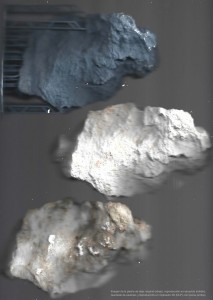
Image of the original aljez stone (bottom), plaster reproduction (middle) and result of scanning and reproduction in 3D printing (DLP) with resin (top)
In this way, we want the sculptural artistic practice to symbolically approach the process of forgetting these transformation procedures that have historically allowed us to connect with the territory in which we live through the use of its nearby geological resources. This process of disappearance will be documented photographically and through scanning and reproduction in 3D printing (DLP) of each of these iterations (cooking, grinding, casting). This circular procedure also demonstrates the sustainability of a mineral material as noble as gypsum, which allows it to be reused. This circular transformation process will be carried out in the Laboratories of the Sculpture Department of the Polytechnic University of Valencia.
Once the intervention at the La Posta Foundation is completed, the sculptures and documentation produced will be deposited in the Soneja Plaster Museum, as a contribution that, in the context of contemporary artistic and sculptural practice, complements the historiographic and ethnological part that the museum already presents. museum.
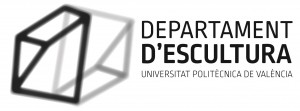
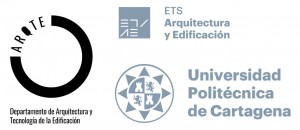
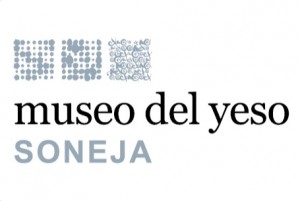

Call for the development of an artistic project: Art and Geology

